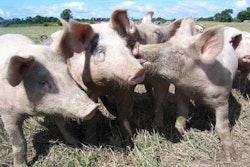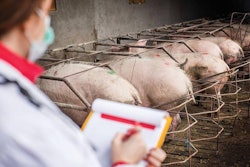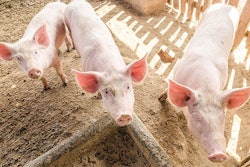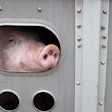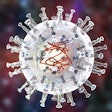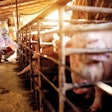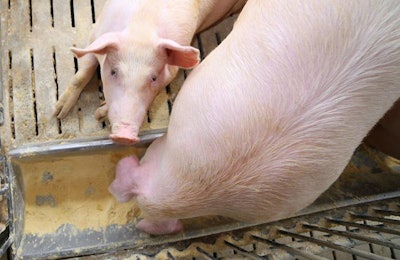
Latest African swine fever update also says China’s overall animal feed consumption will drop by the end of 2019
China’s hog feed consumption is expected to drop by 40% in 2019, according to the latest global update on African swine fever (ASF) from Dutch firm Rabobank.
Overall, China’s animal feed consumption will drop by 17% in 2019, followed by a rally of 8% in 2020, the report said. Hog feed usage is expected to rebound by 5% in 2020 as a result of herd restocking.
“As small-scale pig farms are being phased out, commercial feed penetration is increasing and so is industry consolidation,” the report said.
High pork prices are providing incentives for restocking, despite the risks of recontamination of the ASF virus.
While hog feed accounted for 54% of feed demand in 2018, Rabobank said, that number will drop to 39% in 2019 and 2020, with poultry feed gaining share. In 2018, poultry feed demand share was 35% (18% layer feed and 17% broiler feed), 6% aquafeed and 5% ruminant and other feeds.
“Driven by rising prices of animal protein and substitutional effects, other feeds – for broilers, layers and aqua – will see positive growth in 2019 and 2020,” Rabobank said.
Soybean meal and corn
Partially offsetting the drop in feed consumption is the high inclusion rates of soybean meal and corn in feed rations, Rabobank said. In 2019, soybean meal and feed corn demand is expected to drop by 6% and 12%, respectively. 2020 figures will depend on the inclusion ratios for that year.
Because of favorable pricing and trade distortions, soybean meal is substituting other protein meals. Soybean meal inclusion ratios in hog and poultry feed are forecast to increase by 10%, and by 20% in aquafeed.
If inclusion ratios stay the same in 2020 as they are in 2019, China would need to import at least 88 million metric tons of soybeans; if inclusion ratios return to 2018 levels, 80 million metric tons of soybean imports would be sufficient.
Global market conditions
With much of Asia’s pig herd decimated, Asia will not have enough pork for the remainder of 2019 and 2020, but poultry and plant-based protein is expected to play a bigger role to fill that gap.
Rabobank estimates China’s herd loss to be down 50% for the first eight months of 2019 compared with the same period the previous year. Herd loss is expected to reach 55% by the end of 2019. In Vietnam, the pig herd is down by almost 20% so far in 2019, with 25% of the total herd expected to be lost by the end of the year.
“Growing pork exports and rising prices will challenge exporters in all regions to find an appropriate balance between increasing production, chasing high prices for exports, and supporting local customers,” Rabobank’s report said. “We anticipate relatively unstable market conditions over the coming three to five years, until biosecurity measures increase substantially, an ASF vaccine is widely available, export flows increase materially, and other protein supplies increase structurally.”
View our continuing coverage of the African swine fever outbreak.


